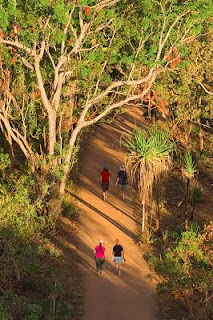 One of the biggest challenges of any art form is to work out whether your own creations are any good or not. And when I say good I'm not talking about that subjective 'good' where you absolutely love what you do.
One of the biggest challenges of any art form is to work out whether your own creations are any good or not. And when I say good I'm not talking about that subjective 'good' where you absolutely love what you do.You may like it, and your Mum might tell you you're the greatest, but is that an accurate appraisal of your abilities? Do you know the difference between a good photo and a great photo?
A veteran photographer friend (I won't call him old 'cause he'll shoot me!) and I were talking about this the other day. The fact that some people can photograph for years and years and never quite get it and yet others can pick up a camera and shoot amazing stuff from the word go.
Those who struggle for years may be satisfied with their work but at the end of the day they have a niggling feeling that they've kind of plateaued without reaching a level they want to. That their pictures are OK but they could be better. And my advice when I meet those people is to really understand what a good photograph is.
I don't mean to look at pictures and say 'wow that's great, I like that' and leave it at that. Examine every minute detail of the image. What was the light like? Has the photographer caught a great moment? What focal length lens have they used? Is it a shallow or big depth-of-field? Have they used flash or natural light? Have they frozen the moment with a fast shutter speed or let the shutter drag for some blur? Have they used (or deliberately ignored) traditional rules of composition?
It's very difficult, if not impossible, to consistently create wonderful photographs if you don't understand the necessary ingredients for a great photograph. We all have individual styles and ways of seeing the world, but at the same time the makings of a good photograph have one thing in common - they make people stop and look harder.
So my advice to those who feel they've plateaued and are happy with their pictures but want to be ecstatic is to look at as much great photography as possible. For travel photography study the masters like Steve McCurry, Bob Krist, Kazuyoshi Nomachi. If wildlife is your thing check out the greats like Frans Lanting, Art Wolfe, Art Morris and the late, great Michio Hoshino. And of course for flash stuff don't forget the wonderful Joe McNally.
But don't just look at their images - see them. Really explore them in-depth and look at how they're constructed. Write down a list of things you note about individual pictures and why they appeal to you - or don't. Once you know what works (and doesn't) then take that knowledge and apply it to your own pictures.
Take that list you wrote about your favourite pictures and see if it applies to your own photographs. If not ask yourself why not? What is missing? What do you need to do differently? Once you clearly understand what makes a great picture you'll be in a better position to truly understand whether your images are as good as your Mum thinks they are.



